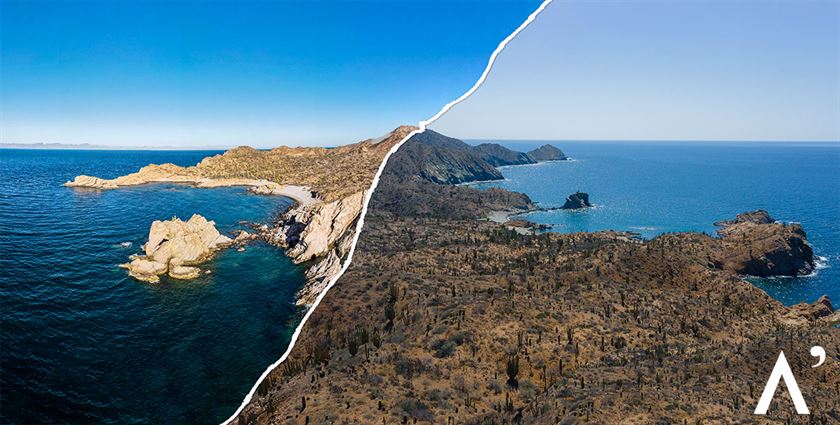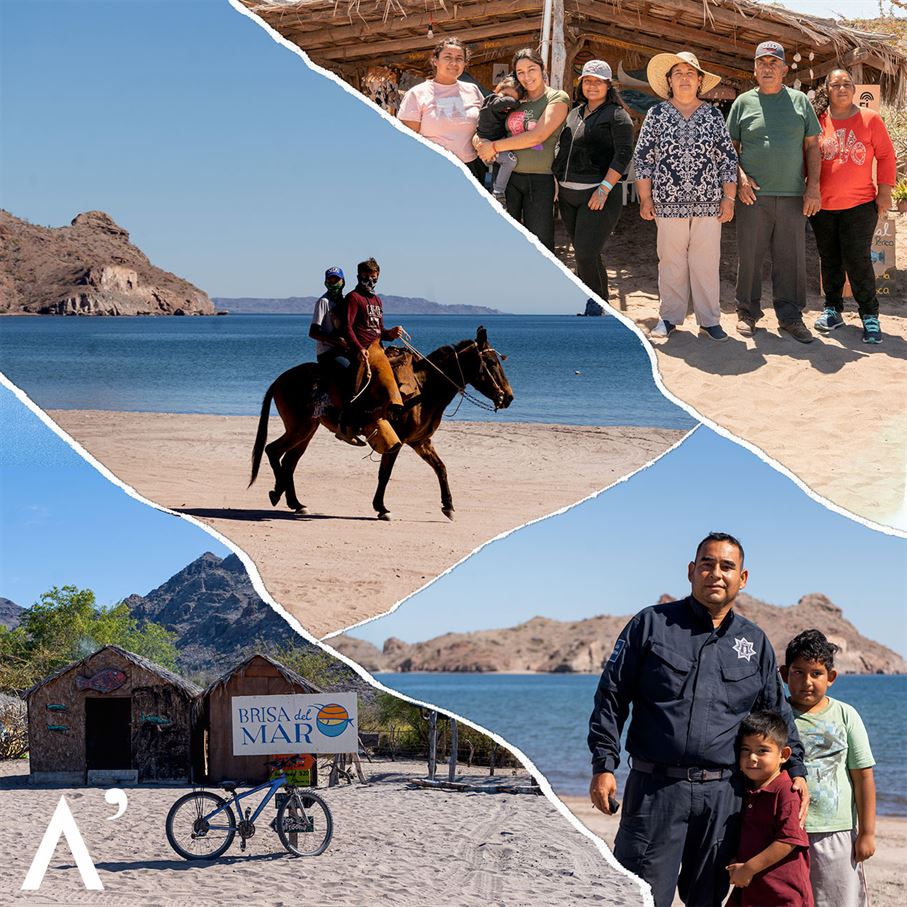Our journey began chasing a sunset, following the shades of a scarlet sky that guided us to the north of the peninsula as a premonition of our destination: “the red mangrove” of the first settlers and, if you guessed right, you would know that this place could only be in the municipality of Loreto.
Guarded by a mountainous landscape where you will want to stop to capture endless postcard-worthy photographs, we head towards Puerto Agua Verde: a small community, approximately 61.2mi from the city of Loreto.

The travel experience is very different because, while there are no large tourist complexes or ostentatious buildings in the area, beauty is found in simple luxuries such as camping under a sky full of stars, trying delicious regional cuisine based on fresh fish and seafood, or meeting the locals who welcome travelers with great kindness.
Once our energy was recharged after sleeping in the singular silence of the sea, Isla Catalana became the next stop on the itinerary. Even before setting foot on the fine sand after the boat ride, we were surprised by the enormous size that characterized the cacti and biznagas, which towered above us at more than 7 feet high as they grow placidly on this isolated mound, accompanied only by a rock known as El Elefante (The Elephant).

Something surprising about Isla Catalana is that it has a diversity of bird species and at least 7 species of endemic reptiles, according to the Amphibian and Reptile Atlas of Peninsular California: Santa Catalina Island Whiptail, Santa Catalina Island, Rattlesnake, Santa Catalina Island Desert Iguana, Santa Catalina Island Kingsnake, Santa Catalina Island Leaf-Toed Gecko, Santa Catalina Island Spiny Lizard, and Santa Catalina Island Side-blotched Lizard.
Aspects like this make Isla Catalana an excellent option for those who wish to immerse themselves in an arid forest to explore the flora and fauna in this jewel of the Bahía de Loreto National Park.
These and other wonders make Puerto Agua Verde an excellent option for those who wish to explore this jewel of the Bahía de Loreto.
Isla Catalana is an area under a special reserve within the Marine Park, so landings are not authorized unless it is for research purposes and with authorized permits. Its surroundings are also prohibited for sport fishing.

